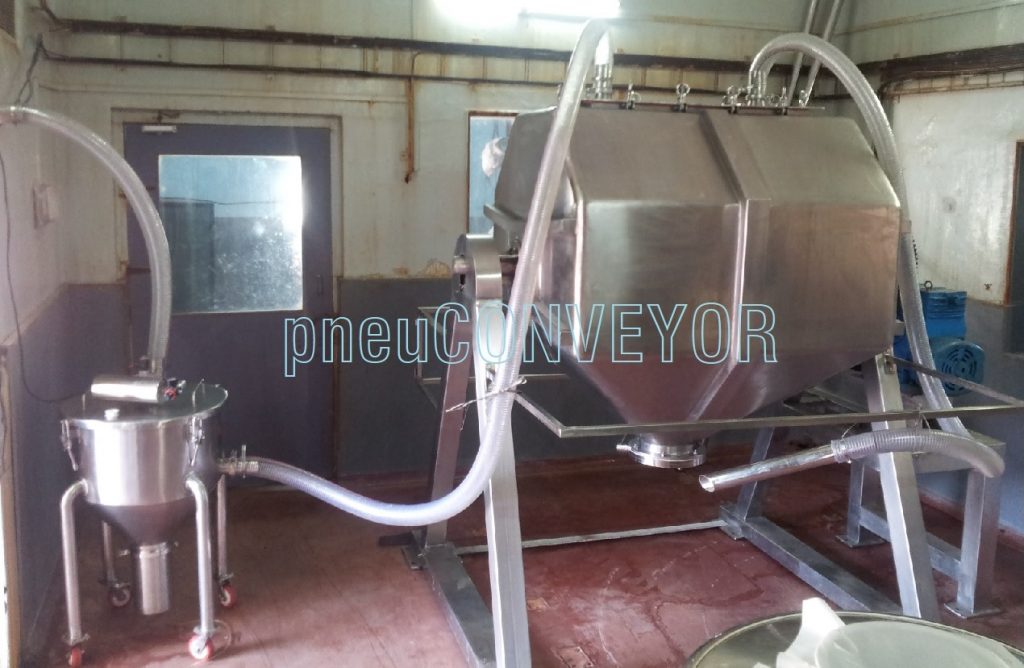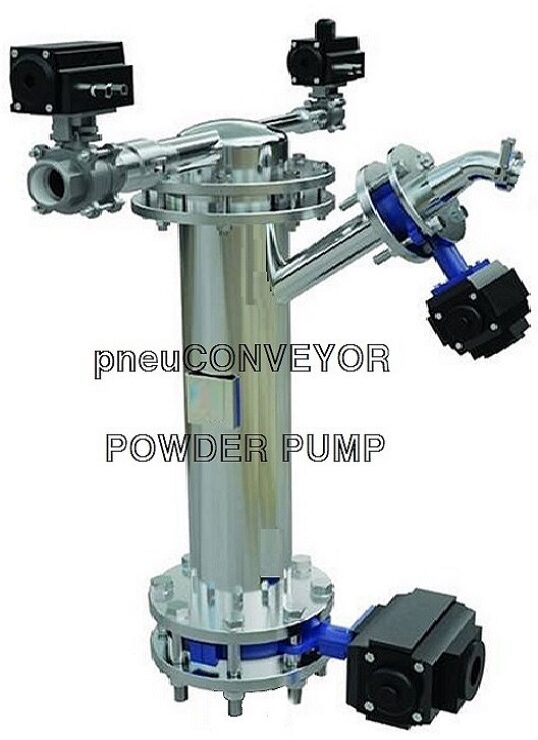Octagonal Blender working
An octagonal blender is a type of industrial blender that is used to mix dry powders and granules. Its name comes from its unique shape, which consists of an eight-sided container that rotates around its central axis. The blender’s working principle is as follows:
- Loading: The material to be mixed is loaded into the blender through a loading port. The blender is designed to handle a specific volume of material, and the operator must ensure that the correct amount is loaded.
- Rotation: Once the material is loaded, the blender is set in motion. The container rotates around its central axis, causing the material to move along with it. The rotation speed can be adjusted to achieve the desired mixing effect.
- Blending: As the container rotates, the material inside is lifted and then falls back down due to gravity. This creates a tumbling motion that ensures that all the material is evenly mixed. The octagonal shape of the container helps to create additional turbulence and improve mixing efficiency.
- Discharging: Once the blending process is complete, the material is discharged through a discharge port. The blender may be equipped with additional features, such as an air-powered slide gate or a discharge valve, to control the flow of material during discharge.
Overall, the octagonal blender is an effective and efficient way to mix dry powders and granules. Its unique shape and tumbling motion ensure that all the material is evenly mixed, and it can handle large volumes of material in a relatively short amount of time.

Octagonal Blender features
An octagonal blender is a type of blending machine used in the pharmaceutical, chemical, and food processing industries. It is named after its unique octagonal shape and is designed to blend and mix powders and granular materials efficiently. Some of the key features of an octagonal blender include:
- Shape: The octagonal shape of the blender is designed to create a vortex that ensures even mixing of the materials.
- Capacity: Octagonal blenders come in different sizes and capacities, ranging from small laboratory models to larger industrial-scale models.
- Construction: They are typically made of stainless steel, which is durable, easy to clean, and resistant to corrosion.
- Mixing speed: The blender operates at a low speed, which reduces the likelihood of material damage or segregation.
- Easy to clean: The blender has a smooth surface finish that makes it easy to clean and maintain.
- Mixing time: Octagonal blenders can blend materials in a relatively short amount of time, reducing the production time for manufacturers.
- Dust-free operation: Octagonal blenders are designed to operate in a closed system, which prevents dust and other contaminants from escaping into the environment.
- Safety features: They typically come with safety features such as interlocks, which prevent the blender from operating if the lid is not securely closed.
Overall, octagonal blenders are a versatile and reliable blending solution that can be used in a range of industries.
octagonal blender advantages
Octagonal blenders, also known as octagonal tumbling blenders, are commonly used in the pharmaceutical, food, and chemical industries to mix powders and granules. Some advantages of octagonal blenders include:
- Uniform Mixing: Octagonal blenders are designed to provide uniform mixing of materials. The eight-sided design helps in achieving better tumbling and mixing of materials, which results in a more homogenous mixture.
- Versatility: Octagonal blenders can handle a wide range of materials, including powders, granules, and even liquids. This makes them a versatile option for many industries.
- Gentle Mixing: Octagonal blenders use a tumbling motion to mix materials, which is gentler compared to other mixing methods such as shearing or agitating. This makes them an ideal option for blending fragile materials.
- Easy to Clean: Octagonal blenders are designed with easy access for cleaning, which makes them easy to clean and maintain.
- Low Maintenance: Octagonal blenders have a simple design, which makes them low maintenance. This can save time and money in the long run.
- Cost-Effective: Octagonal blenders are a cost-effective option compared to other types of mixing equipment. They offer efficient mixing at a lower cost, which makes them a popular choice for many industries.
Overall, octagonal blenders are an excellent option for companies that need a versatile, cost-effective, and efficient mixing solution for their materials
octagonal blender disadvantages
Octagonal blenders are commonly used in industries such as pharmaceutical, chemical, and food processing for mixing and blending materials. However, there are some disadvantages to using octagonal blenders:
- Uneven mixing: Octagonal blenders can sometimes result in uneven mixing, especially if the materials being blended have significantly different sizes or densities.
- Difficult to clean: The shape of the blender can make it difficult to clean thoroughly, which can lead to cross-contamination of materials or residual buildup that can affect subsequent batches.
- High cost: Octagonal blenders can be more expensive to purchase and maintain than other types of blenders.
- Limited capacity: Octagonal blenders typically have a smaller capacity than other types of blenders, which can be a disadvantage for larger production runs.
- Inefficient material discharge: The design of the blender can make it difficult to discharge all of the blended material, which can result in waste and loss of materials.
Overall, octagonal blenders can be effective for certain applications, but their limitations should be considered before making a purchase decision.

